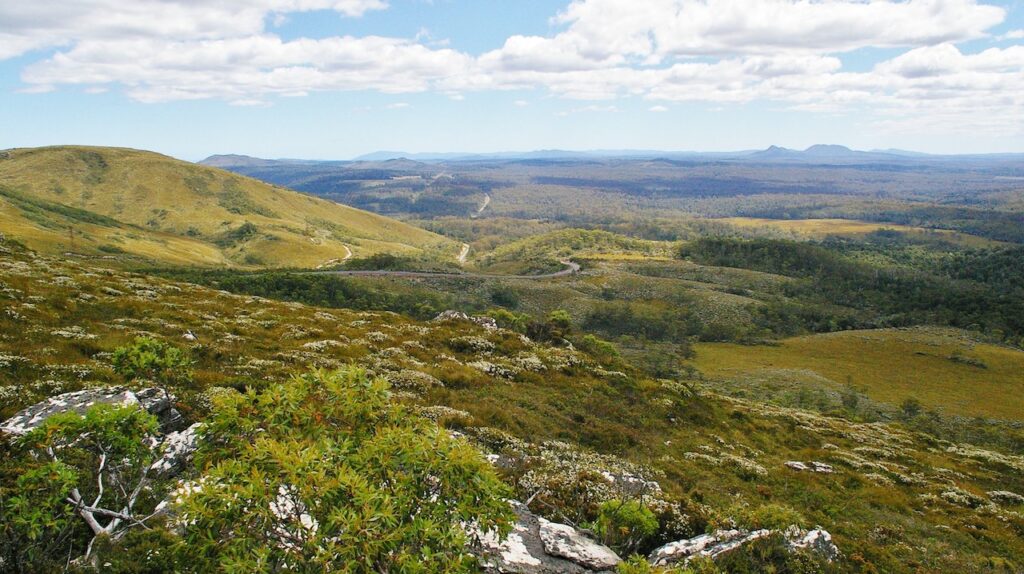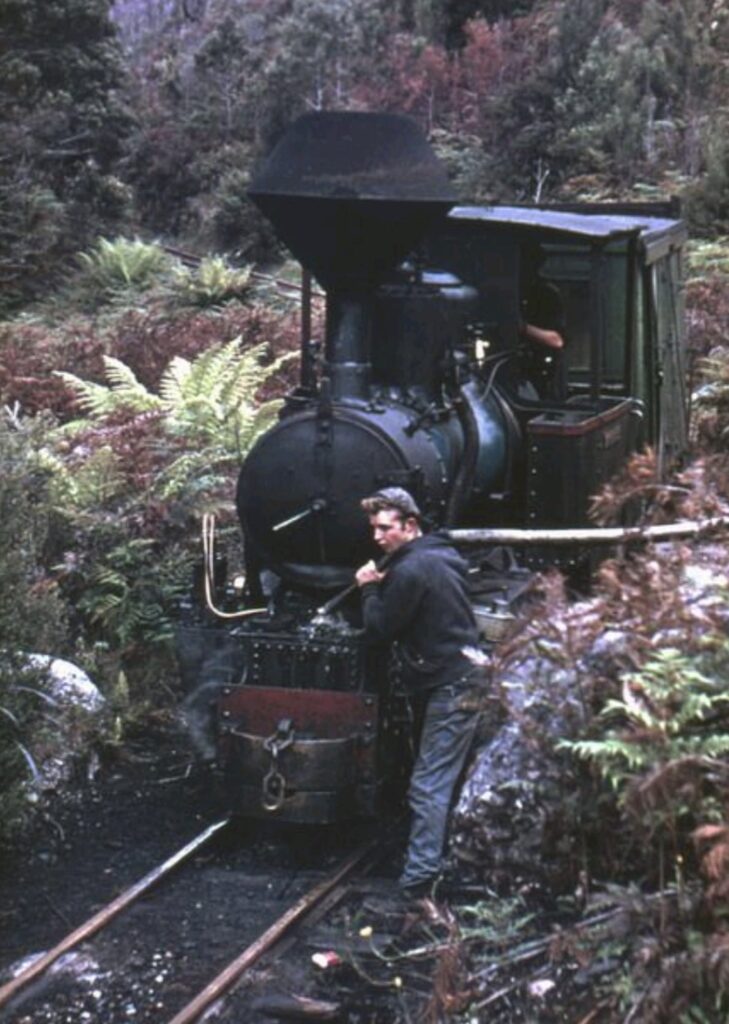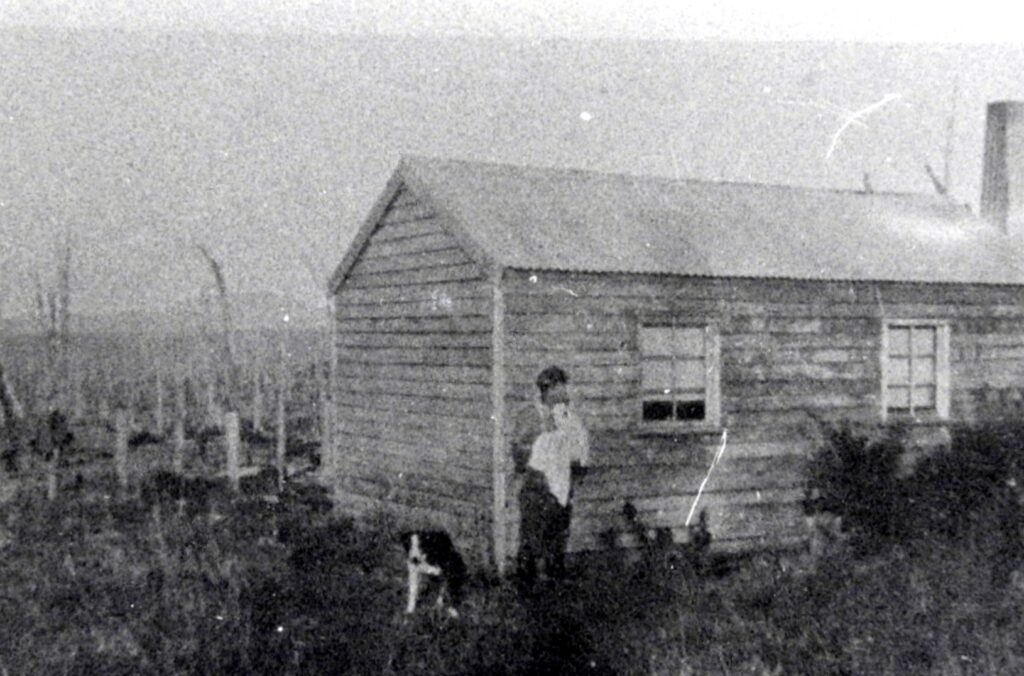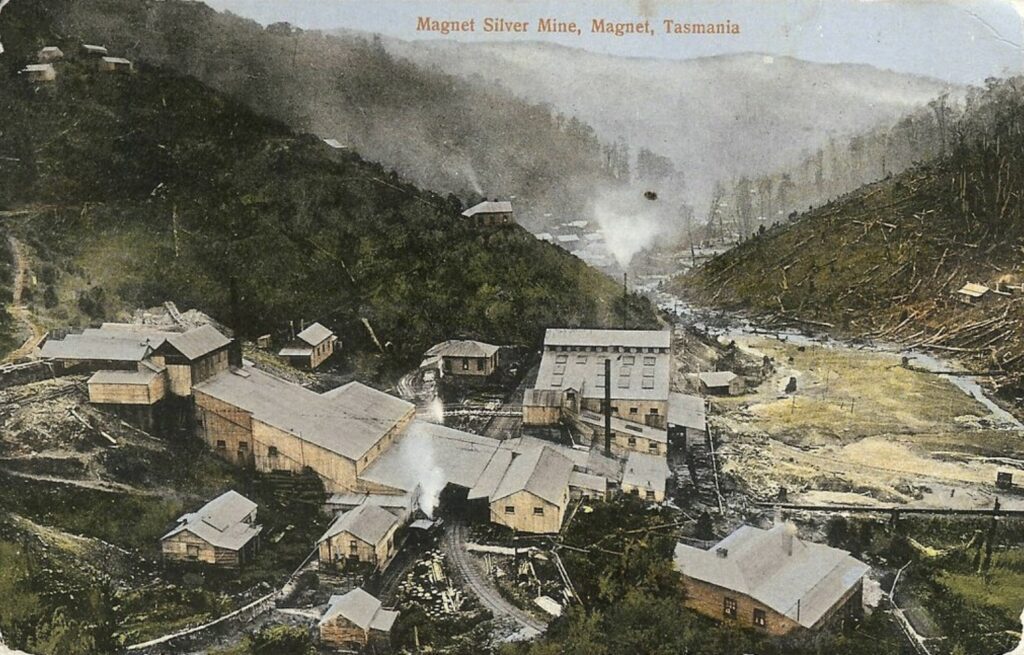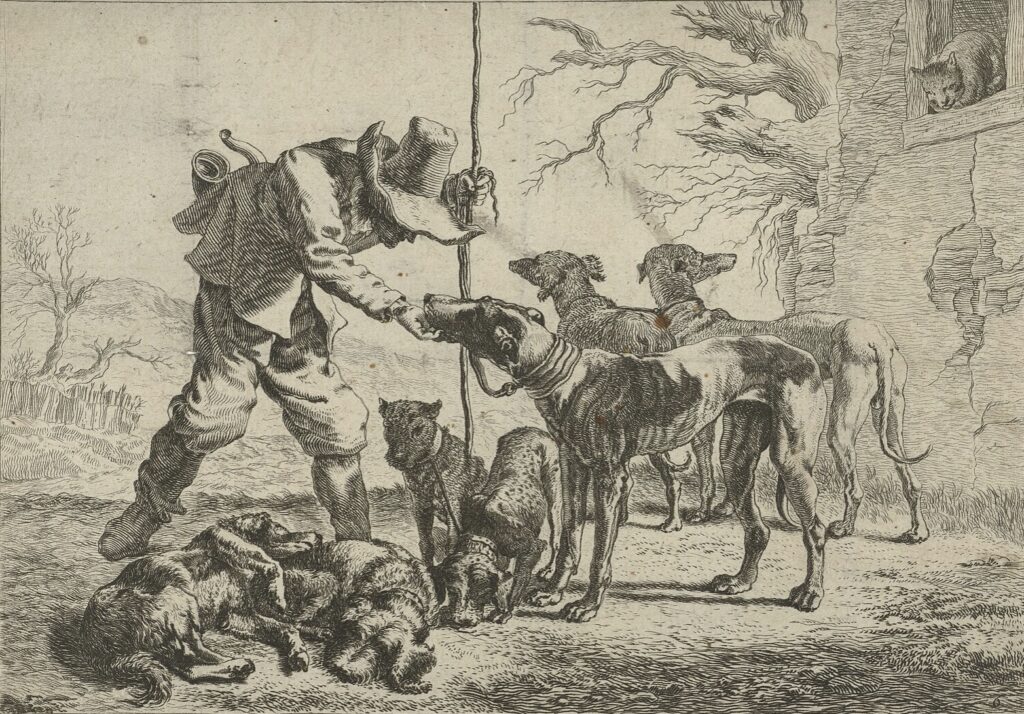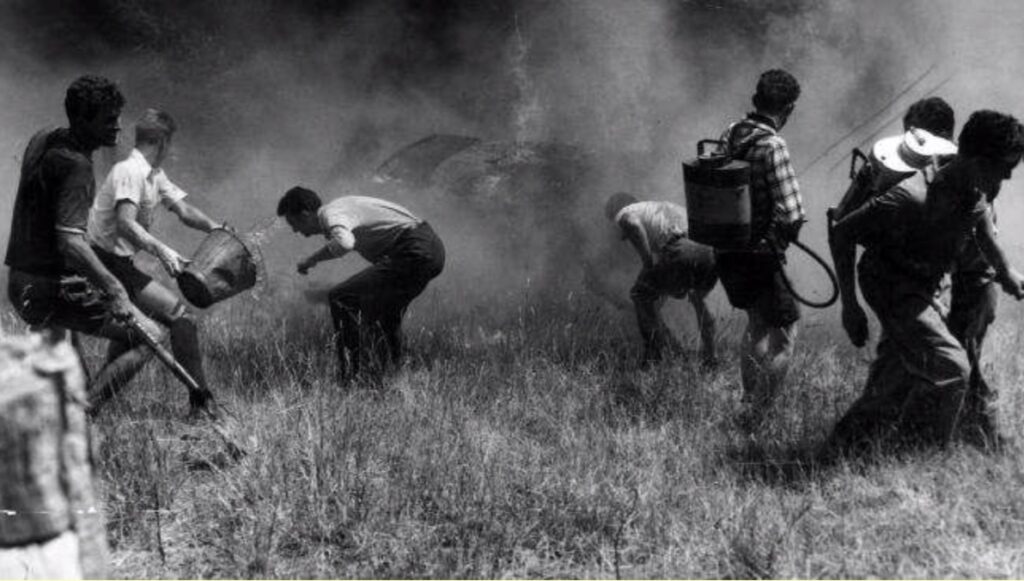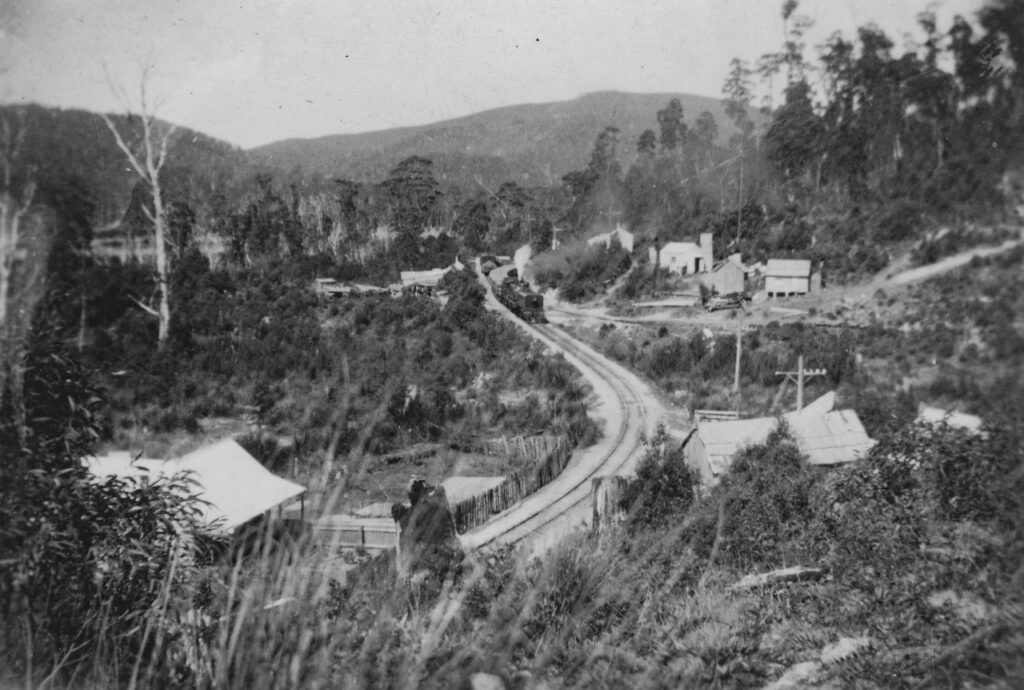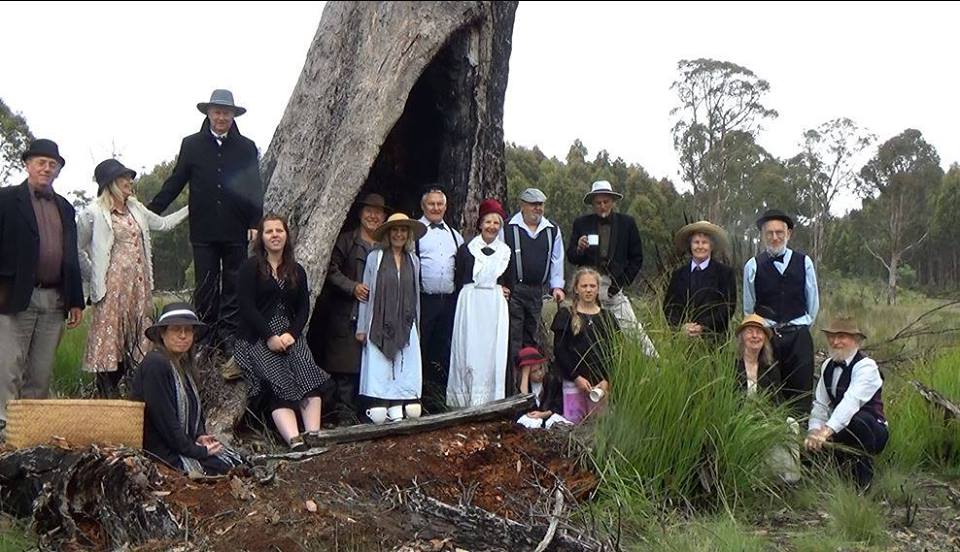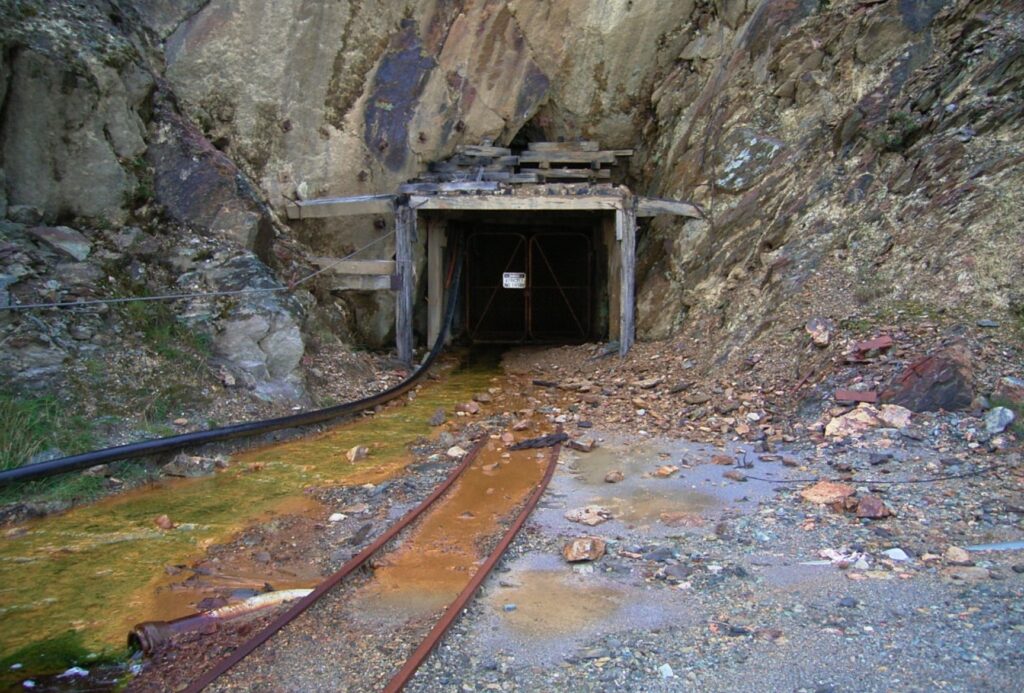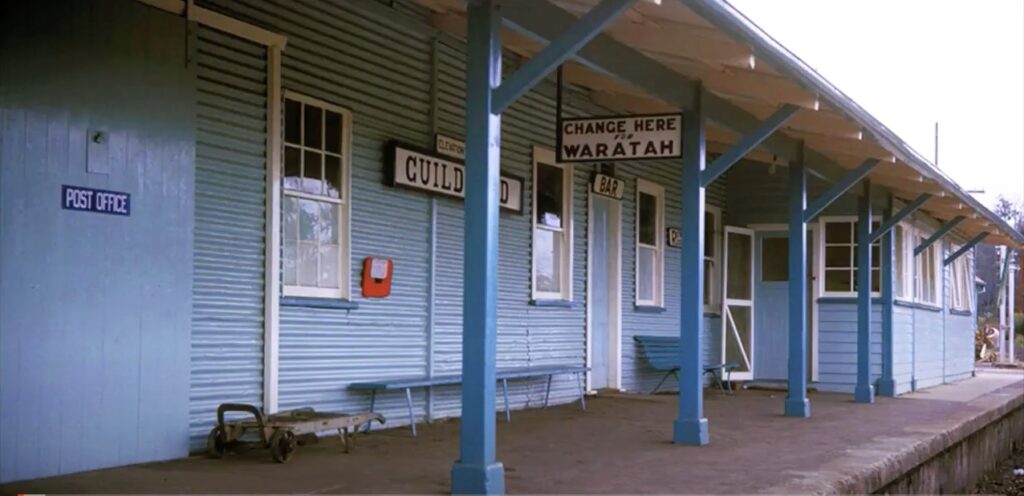Emu Bay Railway
A bushman and his dogs
Herbert Illichmann has provided some bits and pieces about a gentleman called Harry Fisher. Unfortunately, information about Harry is scant, but there are references to him in Kim McDermott’s excellent book Last of the Wildcats and the memoirs of Herbert’s father-in-law, Lindsay Wilson.
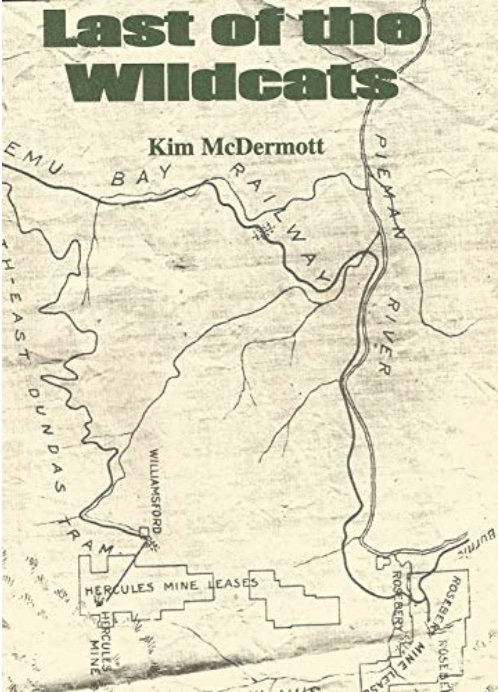
There are also a couple of newspaper articles about Harry, but because Lindsay didn’t provide specific dates, I cannot find them.
A fiery summer in north-west Tasmania
Introduction
The summer of 1933-34 was very dry across most of Australia, including Tasmania. It began a pronounced drought period that lasted until early 1939.
Victoria had significant bushfires in 1932. “Red Tuesday” on 19 January saw many fires in almost every part of the state, particularly West Gippsland, where nine people died. … Read more
Living on the buttongrass plain – a history of Bulgobac
I grew up in a sawmill town on the edge of the buttongrass plain Beside a railway track in the town of Bulgobac Where the locos stop for water from the water tank It also fed the sawmill and the town of Bulgobac Gravel roads were twenty miles away and people very few With mountains all around us with panoramic views At night we sat at the table to a meal of wallaby stew And mother read the bible at night by the kerosene light its true Drivers wait from the loco as it headed south to Boco On the way north they passed our shack in the town of Bulgobac I was part of a big family with no power to our home The times are gone but memories live on living on the buttongrass plain Mother cooked from a wood fired oven Anzac biscuits she baked by the dozen Life was tough but we never complained living on the buttongrass plain I still recall the good old days and how we lived back then In the sawmill town called Bulgobac growing up on a buttongrass plain I’ll never forget with no regrets of life way back then The times are gone but memories live on living on the buttongrass plain The times are gone but memories live on growing up on a buttongrass plain Mott Ryan “Buttongrass plains” from his CD “The Boy from the Buttongrass Plains”
Introduction
Bulgobac is a small siding on the Emu Bay Railway at the 55 Mile.… Read more
Re-enacting Muddy Creek picnic and sports day
In Chapter 10 of my book, Fires, Farms and Forests, I outlined a fantastic summer picnic and sporting carnival held on Surrey Hills from 1922 until 1930. A picturesque location immediately adjacent to the Emu Bay Railway (EBR) line, just outside Guildford Junction, was the chosen site and it became known as the Muddy Creek sports ground.… Read more
A lost opportunity or a wise decision – the plans for a smelter on Surrey (or Hampshire) Hills
After European settlement, Surrey and Hampshire Hills were utilised for grazing and farming under the ownership of the Van Diemen’s Land Company (VDL Co.). The only significant industrial development on those estates was the construction of the Emu Bay Railway. After ownership changed hands to companies associated with Associated Pulp and Paper Mills (APPM), the focus turned to forestry and major infrastructure works, including the construction of roads and the harvesting of timber.… Read more
The Burridge family – synonymous with Guildford Junction
Last month I shared a blog written by Lloyd Wilson, who grew up in Guildford in the 1940s and 50s. This month I want to share another Guildford story from Margaret Brown who was born at Guildford in 1935 and lived there until 1958.[1] She is the longest-serving resident born at Guildford.… Read more
